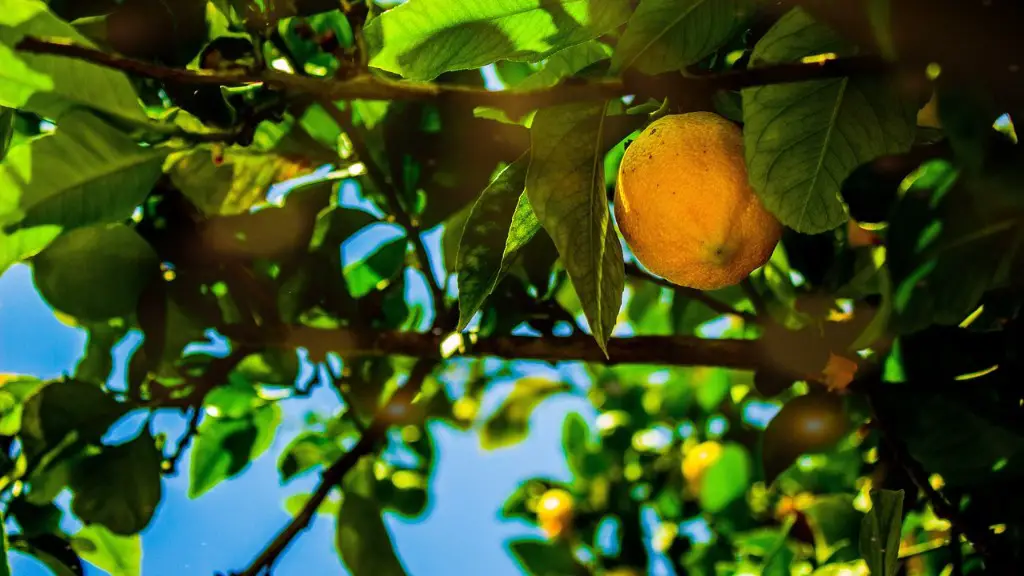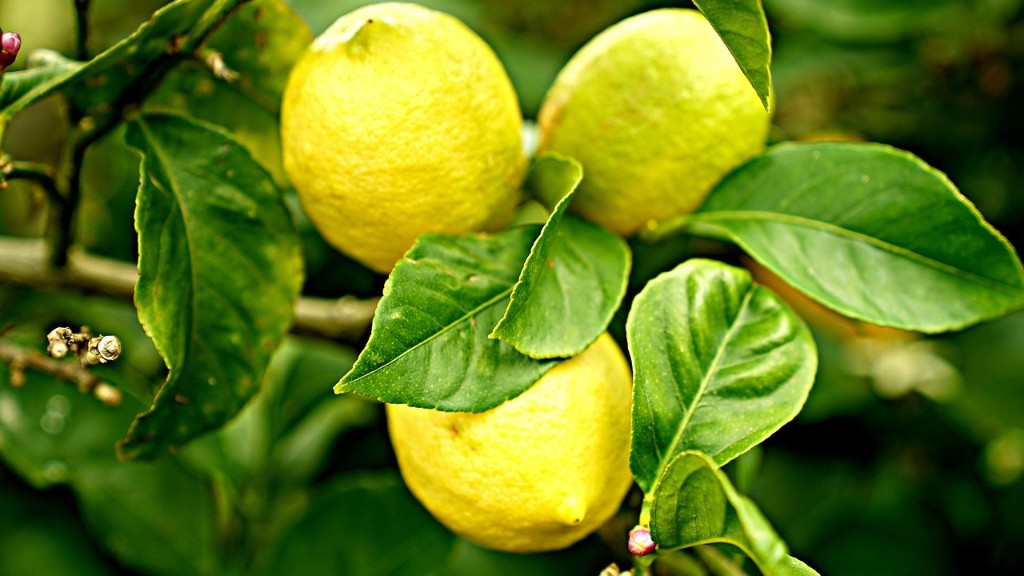It’s easy to be drawn in by the delicious avocado, and even more so by the idea of growing your own. As any owner of an indoor avocado tree will tell you, it’s a fabulous idea with its own unique reward – but to make sure your plant grows healthy and lives a long life, how often should you water it?
To understand how often you should water an avocado tree, it’s important to know the basic requirements of our favourite fruit tree. Avocados are native to a dry, hot climate, which makes them ideal for growing in the home. However, growing an indoor tree needs to be done with careful thought, special care, and regular maintenance.
Water is essential for your indoor avocado tree’s health, just like it is for any other plant. To keep your tree healthy and correct any potential problems, you must be prepared to give it the proper amount of water. The amount of water you give depends on the particular conditions in your home – the amount of light and warmth, and the type of soil your tree is planted in.
The best way to approach watering an indoor avocado tree is to give it a thorough water once a week. The amount you’ll need to give it will vary depending on temperature, the size of your tree and the type of soil. A larger tree in a warmer environment may need more water, while a smaller tree in a cooler environment will require less. Before giving water to your tree, check the soil. If the soil is still damp from the previous watering, there’s no need to water it again – let the soil dry out a bit before watering again.
Underwatering an Avocado Tree
Underwatering is one of the most common issues people have with their indoor avocado tree. Too little water can lead to dead leaves, a lack of growth, and a lack of fruit production. An underwatered avocado tree will typically have dry soil, but the leaves may look healthy – they’ll just be extra short and brittle. On the other hand, take care not to overwater, as this can lead to root rot and fungal problems, which can kill the tree.
When your tree is in bloom, it also needs more water. When the flowers start to open, water more frequently and often. This extra water will help ensure your tree gets the nutrients it needs. You can also use a liquid fertilizer or organic compost when you water. This will give your tree an extra boost and help it to stay healthy.
While giving your avocado tree weekly water is important, don’t forget to give it that bit of extra TLC. When you notice that your tree is drying out, give it a good soaking to ensure the water and nutrients reach down to the lowest level. Give your tree a treat every once in a while – adding fertilizers or compost, or even using a pipette to give it a little extra water – and it will thank you with an extra bounty of delicious fruit.
Recognizing the Signs
It’s important to know the signs of when your avocado tree needs more water. The most obvious signal is if the leaves start to wilt, but the soil is still dry. This is a sign of underwatering – so give it a good soaking. Similarly, if your tree is producing only a few fruits and not growing much, it’s likely that it’s not getting enough water.
Another way to tell that your tree needs more water is to examine the leaves. If the leaf edges are turning yellow, it needs water. This is usually a sign that the water isn’t reaching the leaves – so it’s time to give your tree a good watering. If you see any leaves that are turning brown or crunchy, this is also a sign that the tree needs more water.
Finally, if you notice that your tree is flowering but not producing any fruits, it may be because the flowers aren’t getting enough water. In this case, give your tree more frequent and generous waterings, and it should start producing fruits in no time.
Consistent Soil Moisture
The key to keeping a healthy avocado tree is to make sure the soil stays consistently moist. Too little water will cause the leaves to droop and turn yellow, while too much water will cause the roots to rot. So, the best approach is to give your tree a thorough deep-watering once a week, and an extra sprinkle if necessary depending on how dry the soil is.
The best way to ensure a consistent level of soil moisture is to stick your finger into the soil. If the soil feels dry and parched, give your tree a good soaking. If the soil still feels wet, wait a few days until it dries out a bit before watering again. However, if you’re not sure, it’s always better to err on the side of caution and give the tree a bit of extra water.
Regular pruning and grooming can also help to keep your tree healthy. Pruning will help keep your tree in shape, and will also encourage it to produce more fruit. If you notice any dead leaves or branches, don’t hesitate to prune them off to ensure your tree remains healthy and happy.
Air Circulation & Climate
It’s also important to consider other factors that can affect your avocado tree’s health. Air circulation and climate, for example, play an important role in keeping your tree healthy. Poor air circulation can lead to fungal diseases, and too much humidity can cause rotting of the roots. To avoid these issues, it’s important to ensure that your tree has plenty of light and air circulation.
Similarly, too much heat can cause the leaves to dry out, while too much cold can kill the flowers. The best way to ensure your tree stays healthy, then, is to keep the temperature within a consistent range. Try to keep your indoor avocado tree in a cool and slightly shaded spot, and make sure it doesn’t experience any sudden temperature changes.
Finally, it’s important to watch out for pests. Mealybugs, whiteflies, and spider mites can all devastate an indoor avocado tree. To keep these pests away, it’s important to give your tree a good spraying with insecticidal soap every few months.
Tools & Techniques
Watering your indoor avocado tree is an important part of its maintenance and care, but it’s not the only thing to consider. Utilizing the right tools and techniques can greatly increase the health of your tree and its chances of producing a bountiful crop of fruit. To water your tree effectively, use a pipette or a soaker hose to ensure the water reaches down to the deeper layers of soil. You can also use a pH meter to test the soil’s acidity, which can help you determine when your tree needs more water.
Additionally, it’s important to use the right type of soil. Avocado trees prefer slightly acidic soil, so it’s best to use a mix of organic matter and sand. You can also add a slow-release fertilizer to the soil to ensure that the roots get the nutrients they need, and to help the tree to produce more fruit.
In short, by following these simple techniques and tips, you can ensure that your indoor avocado tree stays healthy and produces delicious fruit. All it takes is a bit of patience and love – and, of course, the right amount of water.
Fertilizers & Compost
While giving your tree the right amount of water is essential for its health, so too is the use of the right fertilizers and compost. Using organic fertilizers or compost will help your tree to get the nutrients it needs and will help to keep it healthy. You can use water-soluble fertilizers or compost teas every week, or you can use a slow-release fertilizer every month or two.
Organic fertilizers are a great way to give your tree the nutrients it needs without risking any chemical buildup in the soil. Compost can also help to maintain a healthy soil environment and a balanced pH. Additionally, it’s important to monitor the soil to ensure it’s not too acidic or too alkaline, as this can affect the tree’s health and its chances of producing fruit.
Using the proper fertilizers and compost is an essential part of keeping an indoor avocado tree healthy. A healthy tree will reward you with an abundant harvest of delicious fruits, and give you years of pleasure.
Bottom Line
In conclusion, proper watering and maintenance of your indoor avocado tree is essential for a healthy and productive tree. Water your tree thoroughly once a week, use the right type of soil and fertilizers, and give it some extra TLC every once in a while. By following these simple tips and tricks, you can be sure that you’ll have a tree that will provide you with plenty of avocados for years to come.


